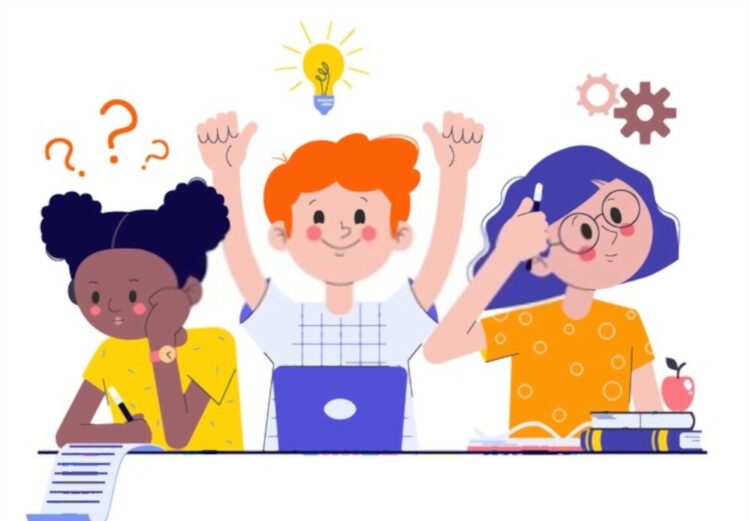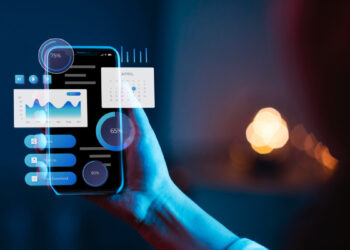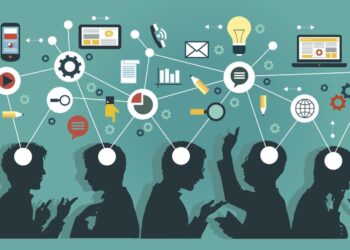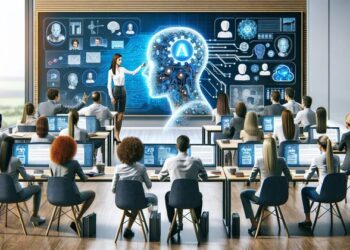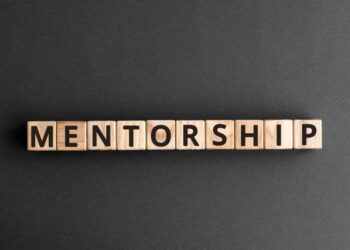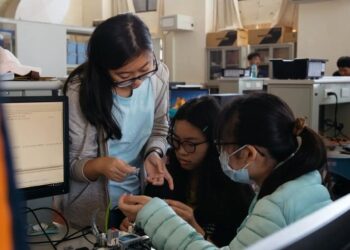In an increasingly dynamic and complex world, the traditional classroom model, often characterized by passive reception of information, is proving insufficient to equip learners with the practical skills and deep understanding required for real-world success. A profound shift is gaining momentum, moving towards a more immersive and engaging pedagogical approach known as experiential learning. This isn’t just a trend; it’s a fundamental recognition that true, lasting knowledge often stems from direct experience, reflection, and application. By placing learners in authentic situations, allowing them to do, discover, and learn from consequences, experiential learning is taking off, revolutionizing education from elementary schools to corporate training.
The Heart of Experiential Learning
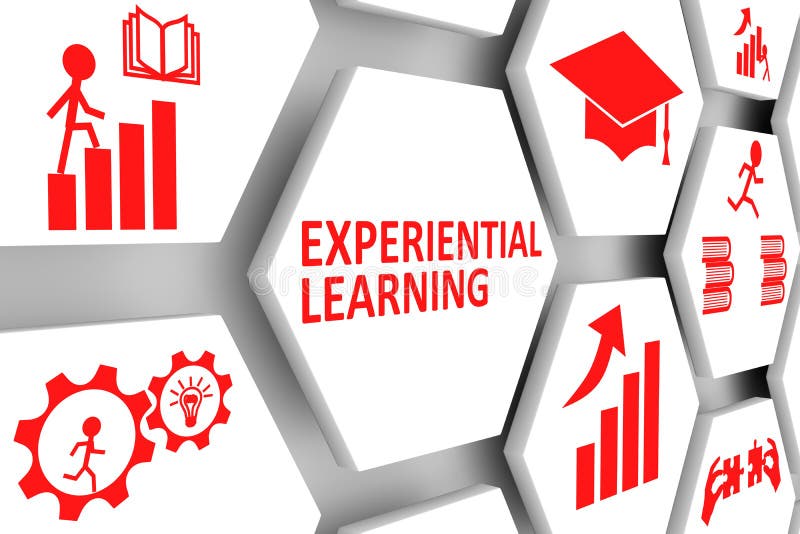
At its core, experiential learning is a philosophy and methodology that prioritizes learning by doing, reflecting on that doing, and applying insights to future situations. It moves beyond rote memorization and abstract theory, immersing learners in scenarios where they actively participate, problem-solve, and construct their own understanding. This approach is profoundly student-centered, fostering a deeper, more meaningful connection with the subject matter.
A. Defining Characteristics of Experiential Learning:
While diverse in its forms, effective experiential learning shares several key attributes:
- Active Involvement: Learners are not passive recipients but active participants. They are doing, experimenting, creating, and engaging directly with the subject matter.
- Reflection: A critical component where learners consciously think about their experiences, analyze what happened, what they learned, and how it connects to prior knowledge. This often involves journaling, group discussions, or structured debriefs.
- Application: Learners apply the knowledge and skills gained from their experience to new situations, demonstrating their understanding and adaptability. This shows transferability of learning.
- Authenticity: The learning activities often simulate or are actual real-world tasks, problems, or challenges, making the learning relevant and purposeful.
- Feedback and Iteration: Learners receive feedback on their performance during the experience, allowing them to adjust their approach and refine their skills in an iterative process.
- Personal Connection: Because the learning is hands-on and often self-directed, learners develop a stronger personal connection to the material, increasing motivation and retention.
- Uncertainty and Risk: Experiential learning often involves a degree of uncertainty or managed risk, which simulates real-world conditions and encourages problem-solving and resilience.
B. David Kolb’s Experiential Learning Cycle:
A foundational theory in the field, David Kolb’s model highlights the cyclical nature of learning from experience. It typically involves four stages:
- A. Concrete Experience (DO): This is the “doing” stage where the learner encounters a new experience or reinterprets an existing one. It’s the direct involvement in an activity.
- B. Reflective Observation (OBSERVE): In this stage, the learner steps back to reflect on the experience. They consider what happened, how they felt, what worked, and what didn’t. This can involve introspection, discussion, or journaling.
- C. Abstract Conceptualization (THINK): Here, the learner makes sense of the experience. They draw conclusions, form new ideas or theories, and connect their observations to broader concepts or existing knowledge. This involves analyzing and generalizing.
- D. Active Experimentation (PLAN/APPLY): Finally, the learner plans how to apply their new understanding to future situations. They test new ideas, try out different approaches, and put their abstract concepts into practice. This leads to new concrete experiences, restarting the cycle.
This cyclical process emphasizes that learning is not a linear progression but an iterative process of experiencing, reflecting, conceptualizing, and applying.
C. Historical Roots and Modern Resurgence:
While a modern focus, the principles of experiential learning are deeply rooted in educational philosophy:
- Ancient Philosophers: Thinkers like Confucius (“Tell me and I forget, show me and I remember, involve me and I understand”) and Aristotle emphasized learning through doing.
- John Dewey: The American philosopher and educator was a strong proponent of “learning by doing” and connecting education to real-life experiences in the early 20th century. He argued that education should be an active process, not passive reception.
- Kurt Lewin: A pioneering psychologist, Lewin emphasized the importance of action research and group dynamics, contributing to the idea of learning from direct involvement.
- Post-Digital Age: The current resurgence is fueled by the recognition that passive, information-dumping methods are ineffective for 21st-century skills, coupled with technological advancements that make rich, authentic simulations and global collaborations more feasible.
Transformative Impact Across Educational Domains
Experiential learning is proving its value in diverse educational settings, from fostering foundational skills in children to preparing professionals for complex leadership roles.
A. Enhancing K-12 Education:
In primary and secondary schools, experiential learning makes abstract concepts tangible and engaging.
- Science: Instead of just reading about photosynthesis, students conduct experiments growing plants under different conditions. Instead of watching videos about ecosystems, they analyze a local pond’s biodiversity.
- History: Students might conduct mock trials of historical figures, participate in historical reenactments, or interview community elders about past events, bringing history to life.
- Mathematics: Applying mathematical concepts to design and build a small structure, manage a mock budget for a class event, or analyze real-world data sets.
- Language Arts: Creating and performing plays, producing podcasts, or interviewing community members for a journalistic project.
- Increased Engagement and Motivation: Hands-on activities inherently capture students’ attention and curiosity, leading to higher levels of participation and a more positive attitude towards learning.
- Deeper Understanding and Retention: Learning through direct experience creates stronger neural connections, leading to a more profound and lasting understanding of concepts compared to passive listening or reading.
B. Revolutionizing Higher Education:
Universities and colleges are increasingly integrating experiential learning to prepare students for careers and civic engagement.
- Internships and Co-op Programs: Students gain direct work experience in their field, applying classroom knowledge to real professional challenges.
- Service-Learning: Combining community service with academic learning, allowing students to address societal needs while reflecting on their experiences in relation to course content.
- Research Projects: Undergraduate and graduate students conduct original research, developing critical thinking, data analysis, and problem-solving skills under faculty mentorship.
- Field Studies and Expeditions: Immersive experiences in specific environments (e.g., archaeological digs, ecological surveys) that provide firsthand understanding.
- Simulations and Case Studies: Using realistic scenarios or real-world business cases to allow students to practice decision-making in a low-risk environment.
- Capstones and Senior Projects: Culminating experiences where students apply accumulated knowledge to a significant, often interdisciplinary, project, often with external partners.
C. Driving Corporate Training and Professional Development:
In the corporate world, experiential learning is crucial for developing practical skills and fostering leadership.
- Leadership Development Programs: Using simulations, role-playing, and outdoor challenges to develop communication, teamwork, and decision-making skills in a dynamic context.
- Sales Training: Practicing sales pitches with immediate feedback, role-playing difficult client interactions, or engaging in simulated negotiation scenarios.
- Onboarding Programs: New employees “learn by doing” through structured job shadowing, mentored projects, and realistic simulations of their daily tasks.
- Compliance and Safety Training: Instead of just lectures, employees might engage in virtual reality (VR) simulations of hazardous environments or practice emergency procedures in realistic drills.
- Team Building and Problem Solving: Utilizing escape rooms, hackathons, or strategic business simulations to foster collaboration, innovation, and resilience under pressure.
- Rapid Skill Application: Experiential methods allow employees to quickly apply new skills to their jobs, leading to faster performance improvement and increased productivity.
Designing and Implementing Effective Experiential Programs

While the benefits are clear, successfully integrating experiential learning requires thoughtful planning, resources, and a commitment to its unique pedagogical approach.
A. Key Design Principles for Experiential Learning:
Designing impactful experiences requires more than just “doing stuff.” It’s about structured learning.
- Clear Learning Objectives: Define precisely what knowledge, skills, or attitudes learners should acquire from the experience. Every activity should serve a purpose.
- Meaningful Challenges: Design tasks that are challenging enough to be engaging but not so overwhelming that they cause frustration. The challenge should align with the learners’ developmental stage.
- Preparation and Context: Provide necessary background information, tools, and a clear understanding of the purpose of the experience before learners engage in the activity.
- Support and Guidance: Offer appropriate levels of support (scaffolding, mentorship, resources) during the activity without removing the challenge or allowing learners to become entirely passive.
- Structured Reflection: Build in dedicated time and methods for reflection. This can include:
- Journaling: Individual written reflection on observations, feelings, and insights.
- Guided Questions: Prompts that encourage deeper thinking about the experience.
- Group Debriefs/Discussions: Facilitated conversations where learners share their experiences, compare perspectives, and collaboratively draw conclusions.
- Peer Feedback: Opportunities for learners to give and receive constructive feedback on their performance.
- Opportunities for Application: Plan how learners will apply what they’ve learned to new scenarios or real-world problems after the initial experience. This demonstrates transferability.
- Safe Environment: Create a psychological safe space where learners feel comfortable taking risks, making mistakes, and learning from them without fear of severe negative consequences.
B. Leveraging Technology to Enhance Experiences:
Technology is a powerful enabler, expanding the possibilities and reach of experiential learning.
- Virtual Reality (VR) and Augmented Reality (AR):
- Immersive Simulations: VR can transport learners to virtual operating rooms, historical sites, or manufacturing plants, allowing them to practice complex procedures in a safe, repeatable environment.
- AR Overlays: AR can overlay digital information onto physical objects, enhancing hands-on learning (e.g., viewing an engine’s internal workings on a real engine block).
- Digital Simulations and Gamification:
- Business Simulators: Software that allows students to run virtual companies, making strategic decisions and seeing the immediate financial and market impact.
- Gamified Problem-Solving: Interactive games that present real-world problems and allow learners to experiment with solutions, earning points or progressing through levels.
- Data Analytics and Feedback Platforms:
- Performance Tracking: Platforms that collect data on learner interactions and decisions within a simulation, providing precise feedback and identifying areas for improvement.
- AI-Powered Coaching: Artificial intelligence can act as a virtual coach, providing real-time guidance and personalized feedback during complex experiential tasks.
- Collaborative Online Tools:
- Virtual Project Management: Tools that allow geographically dispersed teams to collaborate on projects, share documents, and communicate effectively.
- Online Discussion Forums: Providing spaces for asynchronous reflection and peer-to-peer learning after a shared experience.
- Remote Sensing and IoT (Internet of Things):
- Real-time Data Collection: Using sensors to collect environmental data for science projects or monitoring equipment performance in technical training.
- Remote Control: Operating robotics or machinery from a distance for hands-on learning opportunities when physical presence isn’t feasible.
Challenges and Essential Considerations
Despite its profound benefits, implementing experiential learning widely presents specific challenges that must be addressed thoughtfully.
A. Resource Intensiveness:
Experiential learning often requires more resources than traditional methods.
- Time and Planning: Designing and facilitating effective experiential activities is time-consuming for educators, requiring significant preparation and debriefing.
- Financial Investment: Setting up labs, purchasing equipment, organizing field trips, or investing in high-quality simulations can be costly.
- Logistical Complexity: Managing external partnerships (for internships or service-learning), transportation, and safety protocols adds logistical complexity.
- Solutions: Seek grants, foster community partnerships, leverage open educational resources, and utilize technology (VR/AR simulations) to reduce the cost and logistical burden where possible.
B. Assessment and Grading:
Evaluating learning from complex, often subjective, experiences can be challenging.
- Beyond Traditional Tests: Standardized tests may not capture the full extent of learning from experiential activities (e.g., teamwork, adaptability).
- Subjectivity in Evaluation: Assessing skills like leadership, critical thinking in a live scenario, or problem-solving without a single “right” answer can be subjective.
- Solutions: Develop clear rubrics that define criteria for success in experiential tasks; incorporate self-assessment and peer feedback; utilize portfolios to showcase learning; combine experience-based assessment with traditional knowledge checks.
C. Ensuring Safety and Ethical Conduct:
Real-world experiences can sometimes involve risks or ethical dilemmas.
- Risk Management: Thorough planning to mitigate physical and psychological risks associated with field trips, lab work, or simulations.
- Ethical Guidelines: Establishing clear ethical guidelines for interactions with communities (in service-learning) or data handling (in research projects).
- Informed Consent: Ensuring all participants (students, external partners) understand the nature of the experience and provide informed consent.
- Solutions: Implement robust safety protocols; provide ethical training; have clear emergency procedures; obtain necessary permissions and insurance.
D. Scaling and Equity:
Providing high-quality experiential learning opportunities equitably across all students and institutions can be difficult.
- Access Disparities: Not all schools or students have equal access to resources, external partners, or the financial means for extensive experiential programs.
- Teacher Capacity: Not all educators are trained or comfortable facilitating open-ended, less-structured learning experiences.
- Solutions: Develop modular, technology-enhanced experiential resources that can be widely disseminated; invest in comprehensive teacher professional development focused on facilitation skills; create regional consortia for shared resources and opportunities; advocate for policies that support equitable access.
E. Maintaining Academic Rigor:
Some critics worry that hands-on learning might sacrifice academic depth.
- Strong Theoretical Foundation: Ensure that experiential activities are firmly grounded in academic theory and clear learning objectives.
- Structured Reflection: Emphasize the reflection phase of Kolb’s cycle, where learners connect their concrete experiences to abstract concepts and academic knowledge.
- Integrated Assessment: Combine performance-based assessment of experiential skills with traditional assessments of theoretical understanding.
- Solutions: Design experiences that require learners to apply complex academic concepts; challenge students to articulate their learning through academic discourse and writing.
Conclusion
Experiential learning is not merely a pedagogical choice; it is a vital response to the demands of the 21st century. By embracing direct engagement, thoughtful reflection, and meaningful application, it equips learners with the deep understanding, practical skills, and adaptive mindset necessary to thrive in an unpredictable world. As technology continues to evolve, the possibilities for immersive, personalized, and impactful experiential learning will only continue to grow, solidifying its place as a cornerstone of future-ready education.

